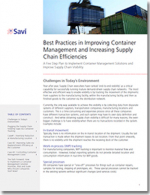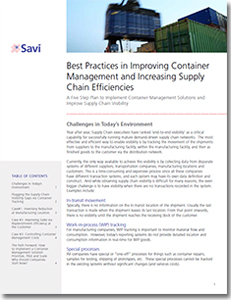Best Practices in Improving Container Management and Increasing Supply Chain Efficiencies
A Five Step Plan to Implement Container Management Solutions and Improve Supply Chain Visibility.
Challenges in Today’s Environment
Year after year, Supply Chain executives have ranked ‘end-to-end visibility’ as a critical capability for successfully running mature demand-driven supply chain networks.
The most effective and efficient way to enable visibility is by tracking the movement of the shipments: from suppliers to the manufacturing facility, within the manufacturing facility, and then as finished goods to the customer via the distribution network.
Currently, the only way available to achieve this visibility is by collecting data from disparate systems of different suppliers, transportation companies, manufacturing locations and customers.
This is a time-consuming and expensive process since all these companies have different transaction systems, and each system may have its own data definition and construct. And while obtaining supply chain visibility is difficult for many reasons, the even bigger challenge is to have visibility when there are no transactions recorded in the system.
Examples include:
- In-transit movement
- Work-in-process (WIP) tracking
- Special processes
What’s Related

Favorites





